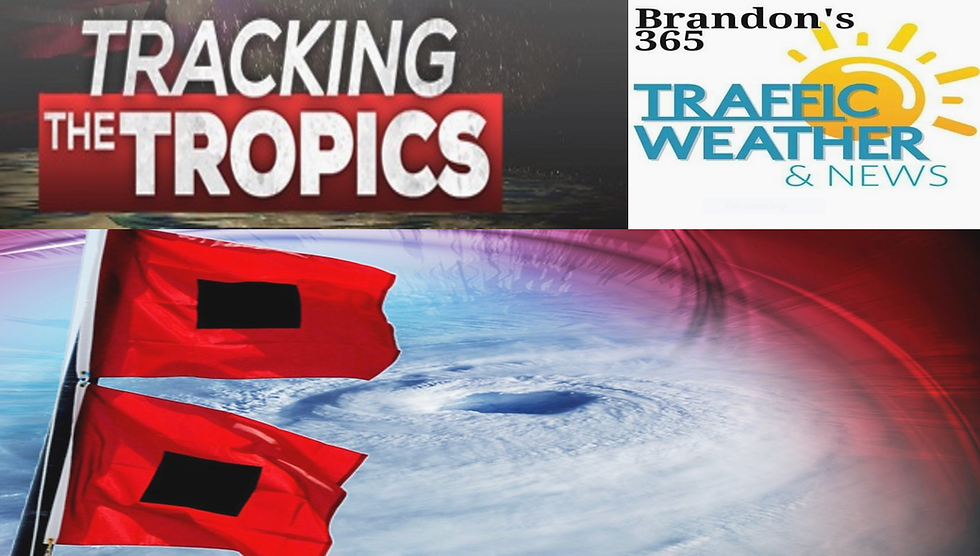BEYOND THE FORECAST: THE DIFFERENCE BETWEEN SUPERCELL TORNADOES AND SQUALL LINE TORNADOES.
- Brandon Shipp

- Jan 18, 2020
- 3 min read
Updated: Sep 18, 2021
SUPERCELL TORNADO
Supercell tornadoes occur from thunderstorms with deep rotation in the storm; rotation meteorologists refer to as a mesocyclone. This rotating column of air extends miles up into the atmosphere and is a result of changing wind speed and direction with height (shear) and the buoyancy of a warm airmass wanting to climb into a colder airmass due to density difference (instability). The rising air will ingest some of the horizontal spinning towards the surface caused by different winds with heights (helicity). Think of an empty paper towel roll lying flat and rotating on the floor. If a storm with high instability develops it pulls the paper towel roll up by one end and the tube goes vertical. Laws of physics takeover such as “The Conservation of Angular Momentum” and the tube spins faster and faster much like an ice skater pulling their arms in while spinning. A tornado is potentially formed at the bottom of the updraft. It’s the supercell tornado that causes the widespread EF5, mile-wide twisters with winds over 250mph. These storms are massive and they modify the environment so much they can live for hours. They only die which when the warm air rising… stops rising. This can be due to several factors, cold air being sucked in, water loading in the updraft, or moving into an environment with lower shear and instability. The supercell tornado is easily seen on radar and nearly always has a tornado warning issued in association with it. The severe weather outbreak of 2011 featured numerous supercell tornadoes. The Joplin tornado was a massive supercell tornado. Rotation is deep and persistent with these storms and the lead time is typically between 10 and 30 minutes.
SQUALL LINE TORNADO
Squall-line tornadoes are much different in their evolution. Squall lines occur along the leading edge of a cold front. The cold front literally lifts the warm air ahead of it to the level needed for it to rise (Level of Free Convection) Because the forcing is so strong along the leading edge of a cold front several cells form. A line develops and produces rain that cools the air and sinks. This sinking air is called a cold pool and can actually race ahead of the cold front causing new storms and updrafts. Storms in a line often have the strongest winds on the leading edge of the line with precipitation extending behind the line for several miles. Storms with precipitation behind the line are called “trailing stratiform” and indicate the presence of strong winds in the atmosphere. When the direction of the wind shear is perpendicular (a right angle) to the line of storms… the storms are strongest and most severe. Most severe weather occurs in the initiation phase of squall lines. What happens next in squall lines is fascinating… As winds rush out of the line a “bow” forms. It looks like a big arc or banana on radar. Two important things begin to take place. As air mass and water vapor is evacuated behind the bow as well as on the leading edge of the updraft… low pressure is created. You can’t leave an empty space in the atmosphere. Air comes in to fill the empty space. In high shear, it comes from the drier air aloft. Much like you get cool out of the shower from the evaporative cooling… the dry air accelerates the cold pool and forces even stronger cells and damaging winds near the surface. This is called the “ Rear Inflow Jet” Big tornadoes start with the mesocyclone in the middle of the atmosphere and work their way towards the surface. Squall-line tornadoes start near the ground and work their way up. Often occurring before any rotation rises up to the height of the radar beam. Squall line tornadoes are called QLCS Tornadoes in the meteorological world which stands for “Quasi Linear Convective System."
They can be dangerous because they can spin up and cause damage in a matter of seconds. Some QLCS Tornadoes do not have a tornado warning issued before they occur.













Comments